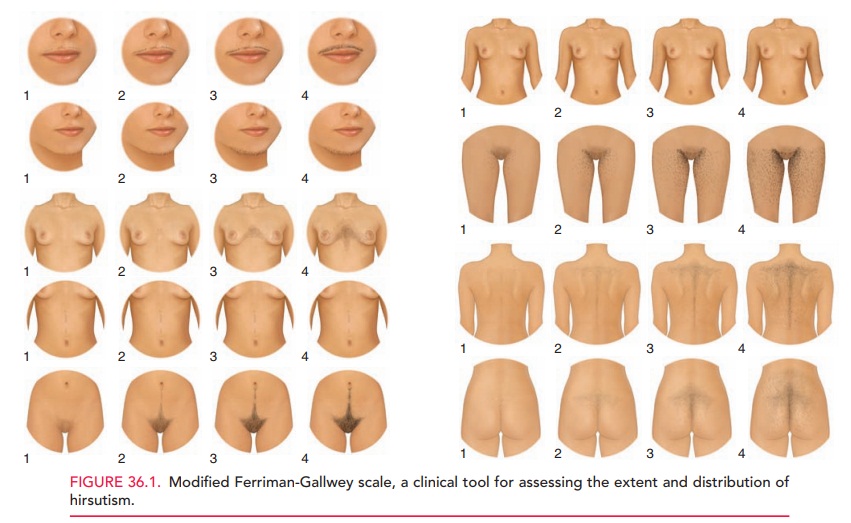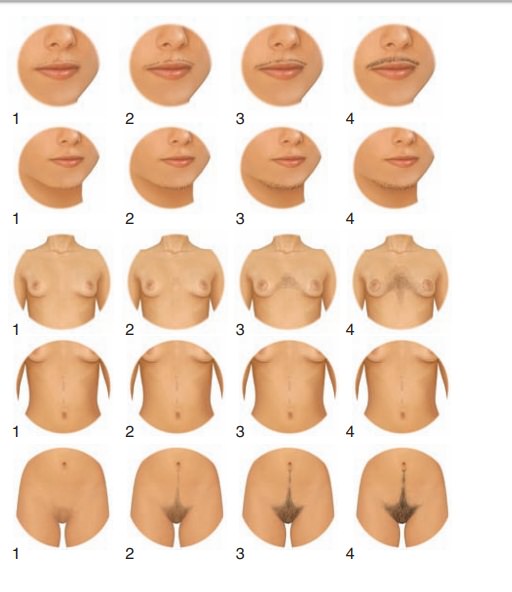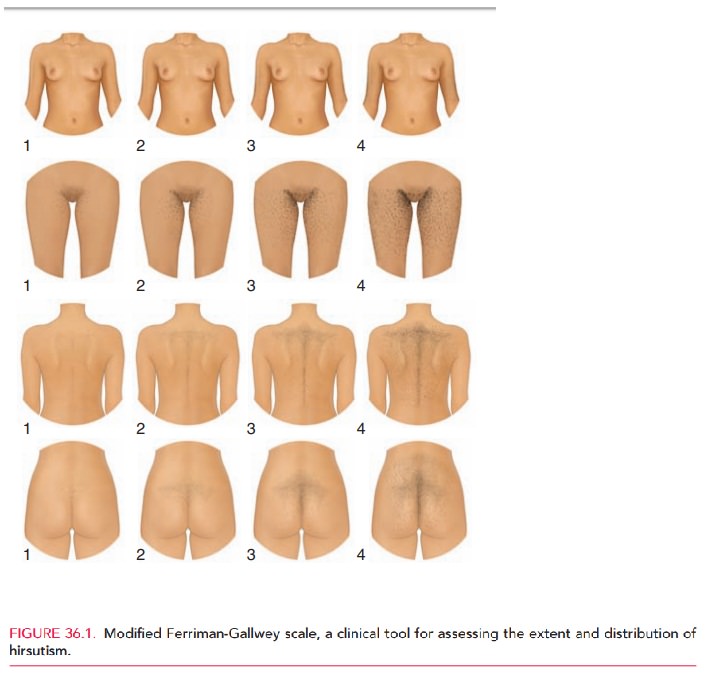Chapter: Obstetrics and Gynecology: Hirsutism and Virilization
Hirsutism and Virilization

Hirsutism
and Virilization
Hirsutism is excess terminal hair in a male
pattern ofH distribution.It is manifested
initially by the appear-ance of midline terminal hair. Terminal hair is darker,
coarser, and kinkier than vellus hair, which is soft, downy, and fine. Care
must be taken to evaluate the pos-sibility that excess terminal hair is
familial, not patholog-ical, in origin. A scale used for the evaluation of
hirsutism is shown in Figure 36.1. When a woman is exposed to excess androgens,
terminal hair first appears on the lower abdomen and around the nipples, next
around the chin and upper lip, and finally between the breasts and on the lower
back. Usually, a woman with hirsutism also has acne. For women in Western
cultures, terminal hair on the abdomen, breasts, and face is considered
unsightly and presents a cosmetic problem. As a result, at the first sign of
hirsutism, women often consult their physician to seek a cause for the excess
hair growth and seek treatment to eliminate it.


Virilization is defined as masculinization of
a woman andis associated with a marked increase in circulating testosterone.As a
woman becomes virilized, she first notices enlargement of the clitoris,
followed by temporal balding, deepening of the voice, involution of the
breasts, and a remodeling of the limb–shoulder girdle as well as hirsutism.
Over time, she takes on a more masculine appearance.
Hirsutism and virilization may be
clinical clues to an underlying androgen excess disorder.
When
evaluating and treating hirsutism and virilization, the sites of androgen
production and the mechanisms of androgen action should be considered.
Idiopathic (constitutional or
familial) hirsutism (a diagnosis of exclusion) is the most common nonpathologic
etiology, representing about one-half of all cases. The most common pathologic
causes of hirsutism are polycystic ovarian syn-drome, followed by congenital
adrenal hyperplasia. These conditions must be diagnosed by laboratory
evaluations. Treatment of androgen excess should be directed at sup-pressing
the source of androgen excess or blocking andro-gen action at the receptor
site.
Related Topics